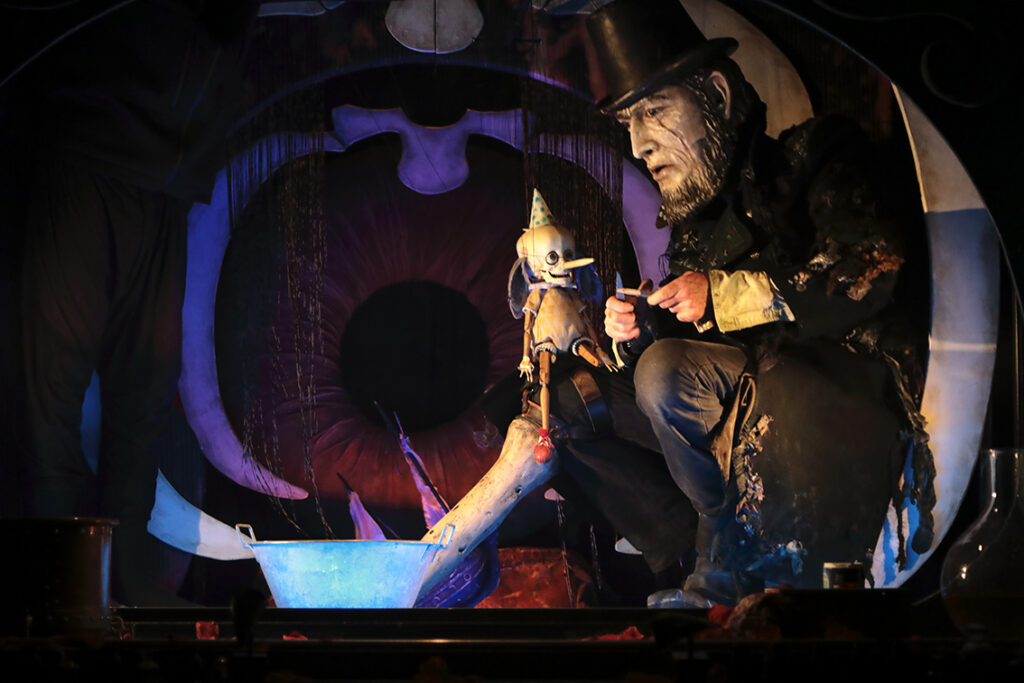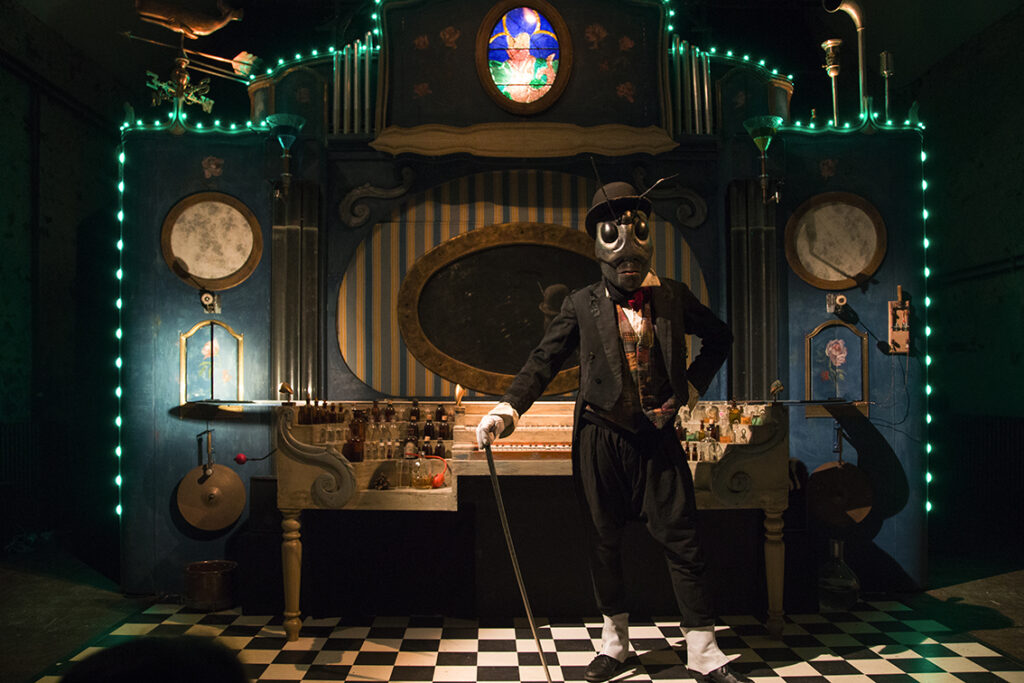Les Antliaclastes’ Patrick Sims on Ambergris, part of MimeLondon at the Barbican Centre
It’s that exciting time of year again, when the Barbican is host to a month of astonishing international contemporary performance. This year, the London International Mime Festival has been remodelled as MimeLondon, but it promises the same quality of extraordinary productions we have learned to expect from this unique season. First up is Ambergris by renowned French company Les Antliaclastes (Waltz of the Hommelettes), which is adapted from the story of Pinocchio and set in the belly of a whale. My nose would grow if I said I wasn’t excited when we were offered the opportunity to dive into the creative process behind this intriguing production with the company’s director, Patrick Sims.
Hi Patrick. Ambergris hinges on Pinocchio’s time in the belly of the whale. Can you tell us a bit about the story and how it came to be set in such an odd location?
The idea for this show was born whilst watching Disney’s Pinocchio with my son, who was very young at the time. He was terribly disappointed the moment the puppet turned into a real boy. He found that the character had completely lost his charm, and even became a bit creepy. The scene in the belly of the whale is when Pinocchio searches for his lost father, and in doing so makes conscious efforts to become a real boy. In our show, the belly of the whale is a metaphor for a womb, an alchemist’s furnace, a cocoon or a scene for transformation. Pinocchio does not wish to leave and therefore causes a blockage in the whale’s guts. This blockage produces ambergris.
Pinocchio is a classic story originally written for children. Is Ambergris intended to appeal to a young audience, or maybe to speak to their experiences in some way?
Ambergris remains faithful to the spirit of Collodi’s Pinocchio, a version with which most people are unfamiliar. This original was very moralistic, and much darker. We play around a lot with these themes in a more cartoonish, slapstick way. Ambergris is intended for kids of all ages. It’s corny to say, but there’s something in it for everyone.
How did you initially conjure up the character of the perfumer?
In the art of perfumery, as in the tale of Pinocchio, we often talk about the “nose.” In our show the perfumer (whose head is a giant nose) blends fragrances that become stories, searching all the while for the precious ambergris to use as the base note for a perfume that is to become an olfactory masterpiece. Her costume is based on a French perfumer’s costume from the 18th century, coloured lavender – a “neutral” cleansing fragrance used in perfumery.
The story is brought to life using puppets, masks and multiple other devices. Why use objects rather than people to tell the tale?
In Ambergris Pinocchio is a puppet, Ahab is a wooden actor, Jonah is an antique religious automaton, the perfumer is a giant nose, the skunks are skunks, etc. The perfumer’s organ works by mechanical automation like a perfumer’s organ symphony. Ironically, puppets don’t lie and masks can be true faces because they are intentional ones. These are some of the very themes within the show. This particular show demanded these kinds of performers.
Can you tell us about your inspiration for the design work and music, and the materials you use? It all sound very exotic and sensory.
The decor is based on an old fairground steam organ with all its moving automata, drums, bells and whistles. The perfumer’s worktable is referred to in the profession as an organ, on which they arrange fragrances on the shelves like different notes on a piano. Perfume composition and musical composition use many of the same terms in describing the process. The music is a mixture of sacred and profane organ music, whaling shanties, mechanical music, and a deep organic, somewhat digestive electronic underbelly within the soundscape. The main musical theme is called, “Funeral for a marionette” by Gounod, most well-known from Alfred Hitchcock’s TV series.
Les Antliaclastes is a French company and you are from the USA. As a wordless performance, does Ambergris travel well between cultures?
It does. The limited text is a voice-over and is often translated into the local language.
What do you hope your audience will take away from their evening in the belly of the whale?
A better sense of smell.


Many thanks to Patrick for taking the time to tell us all about this fascinating production. Les Antliaclastes’ Ambergris runs from Tuesday 23-Saturday 27 January as part of MimeLondon at the Barbican Centre. Further information and bookings available here.
 Everything Theatre Reviews, interviews and news for theatre lovers, London and beyond
Everything Theatre Reviews, interviews and news for theatre lovers, London and beyond




